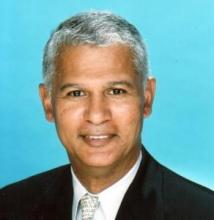Paramedics Rescuing Primary Care?

The ongoing physician shortage in California is forcing many provider organizations to think outside of the box in terms of how to stretch existing capacity.
There have been mixed results to address this issue legislatively: A watered-down bill to provide a limited scope of practice expansion to pharmacists was recently signed into law. However, similar efforts on behalf of nurses and optometrists have failed due to objections from the California Medical Association and other provider lobbies.
Yet two state agencies – the Office of Statewide Health Planning and Development (OSHPD) and the California Emergency Medical Service Authority (EMSA) – may succeed where the California Legislature has failed. And paramedics may be placed at the center of reform efforts.
Existing law in California allows OSHPD to test, demonstrate and evaluate new or expanded roles for healthcare professionals or new healthcare delivery alternatives before changes in licensing are made by the Legislature. Using that authority, EMSA is planning to do just that by expanding the role of paramedics in counties electing to participate in a health workforce pilot project next year.
Under this pilot, paramedics would be allowed to transport non-emergent 911 callers to medical sites other than hospital emergency rooms. Paramedics would also be allowed to provide followup care to recently discharged patients who have chronic conditions such as diabetes, asthma and congestive heart failure. And they would also be permitted to partner with primary care providers and community health workers in medically underserved areas (mostly rural and isolated parts of California) to provide preventative healthcare services.
There have been similar scope-of-practice expansion efforts for paramedics in other states. In Colorado, paramedics in one jurisdiction have administered blood tests, conducted visits to newborns and performed some limited medication management. They have been able to save about $1,200 in healthcare costs for each patient treated.
In North Carolina's New Hanover County, paramedics are receiving an additional 300 hours of training on patient assessment and management. Local hospital admissions have dropped significantly as a result, spurring at least a half-dozen other similar programs statewide.
I have to wonder if my physician brother and my emergency room physician friends know this is coming? Aside from the expansion of the scope of practice for EMT-paramedics to be allowed in this pilot, this cuts directly into the income of ER docs (and hospitals) who now get to bill for the care they provide to the many thousands of non-emergency patients brought to hospitals each year by ambulances because that is the current protocol in most jurisdictions for managing 911 calls.
At the same time, however, primary care resources will be extended, and it is likely that doctors will feel less overburdened, no doubt allowing them to provide higher quality of care to the patients they do see.
For more reading on this issue, I highly recommend that you read "Community Paramedicine: A Promising Model for Integrating Emergency and Primary Care," a report published last month by the Institute for Population Health Improvement at UC Davis.
Jim Lott is the executive vice president of COPE Health Solutions in Los Angeles. He is a member of the Payers & Providers editorial board.






